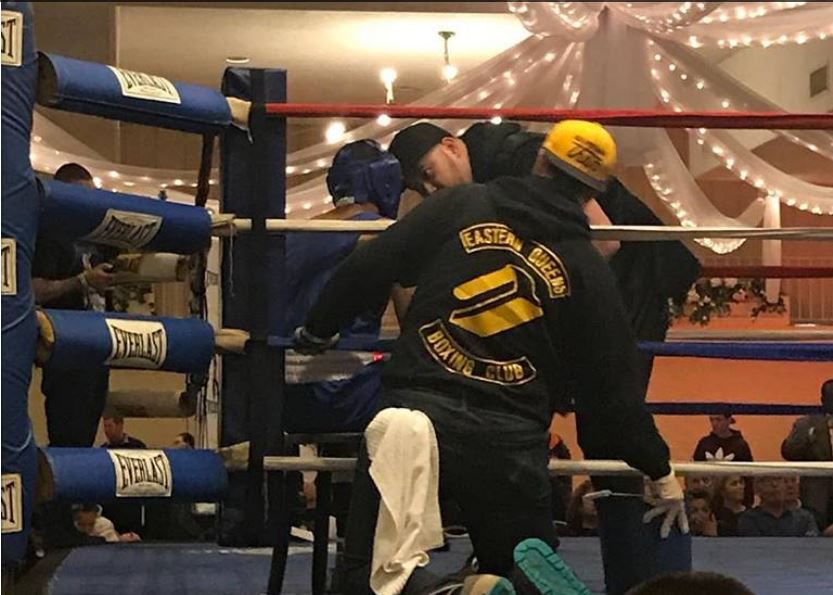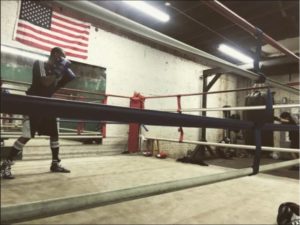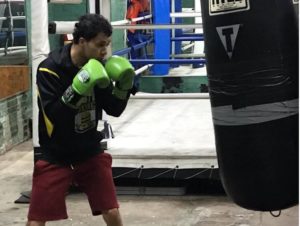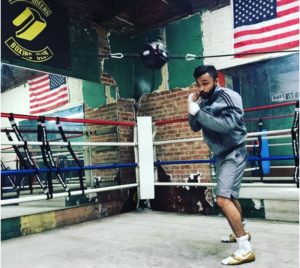The surge in popularity of mma is causing an influx of average people thinking they can be fighters only because they have the
nerve to fight. This is the exact naïveté that makes children believe they can do anything they put their minds to. But fighters are cultivated from birth, not built from the audacity of “choice.” The cliché goes “fighters are born, not made.” The problem now is that there are countless semi-successes who are really just average guys, untalented, non-inundated, and who do not embody people with personal life experiences related to being fighters. They are guys who fell into fighting or think bad tempers can be harnessed into those of prize fighters.
So what makes a real fighter? This is as academic as the notions of what makes real gangsters, or real ‘anythings,’ but there is a sound and valid moral to the question. Will, or nerve, can make an everyday person shoot a few people and call himself a gangster. The will to fight can impel anyone to challenge someone to a brawl. Nerve can make anyone try anything. A fighter, however, is only real if he has discipline. Discipline is the essential trait to live a life of fighting, getting better, gaining knowledge, and not living a lie.
There are dozens of brawlers in every neighborhood, almost all of whom could not be considered fighters in the sense of what’s “real.” The idea of hyper, short tempered toughies who face-fight (an extra effort in showing up or intimidating someone during a stare-down) before they throw their flurries of all-out haymakers is laughable. That’s what everyday people in fights do. That wide-eyed anger is a lie sold to everyone as kids and carries into adulthood; people continue to believe that anger is what makes fighters, because it can be intimidating. Most people, however, really don’t want to fight. They may seek glory, or they may be genuinely angry when they fight, but they don’t want the challenge of seeing if they can win on the front of adversity. On the contrary, these guys usually fight only if they believe they can win. The majority of the time they want to save face and get it over with, hopefully on the violent side of winning. But the strong effort average Joes put into mouthing off, face-fighting, and psyching-up themselves only to hurry their attacks are all by-products of the psychology of their anger and fear. Real fighters fight despite their emotions (fear, anger), not because of it. Such insecurity, fighting on emotion, is not what makes a fighter.
Fear is good when used to an advantage, but when used to fuel adrenaline and anger, it is only a temporary protection. That is not discipline, but a short-cut to depleting energy. Non-fighters so often put across these everyday tactics, but it’s idiocy. Experienced discipline teaches real fighters – Anderson Silva, BJ Penn, Fedor Emelianenko, Georges St. Pierre, Lyoto Machida – that being composed throughout is the only way to be. When some decent fighters – Diego Sanchez, Wanderlei Silva – jump around and face-fight, they are just wasting energy on a hoax because no one can fight effectively angry and adrenaline filled. Look at how Diego Sanchez pretends to foam at the mouth; it’s hilarious and one of the most childish and corny acts in sports. It’s a waste of focus, too, if it’s not actual adrenaline. An old trainer I noticed at one gym used to make the fighters swallow a mouthful of water when they got emotional saying, “You need to water down the adrenaline and act like a man.” It probably has less physiological effect than symbolic effect, but it sticks. Adrenaline is a hormone (Epinephrine) that offers a short burst of enhanced performance, but it has worse down-sides. When the adrenaline runs out, after seconds, one’s body feels drained. If you’ve ever been in the ring, you would intimately understand that adrenaline hurts more than it may have helped for its 45 seconds or so. Anger works the same way; it is a contradiction of discipline.
The Ultimate Fighter (TUF) television show is the ultimate display of average guys, most of whom are not real fighters, who act like neighborhood meat-heads who want to think they could fight. Regardless of their backgrounds, if they could fight it would be good enough. But most of the guys play up the whole pro-fighter facade without the actual meat-and-potatoes approach. They continually copy the maddened ring entrances and Tito Ortiz-like jumps and arm-shakes. Who helped rehearse that act and what was that about even then?
For the approach to fighting, they usually follow the basic tenets of the ground game, but TUF contestants are almost unanimously lost in their stand-up games because they seem to think of it as a tough guy contest. Most of them fight on their feet exactly like average fighters in the street. They wail and flail, and they seem to fight off of adrenaline, speeding up the tiring process and leaving themselves open to getting knocked-out. They need to absorb the idea that all of fighting, from beginning to end, is about science and composure.
Like most people, some of these wanna-be fighters are just not real. But if some children can do it, if these guys put their minds to it, a few of them might actually be able to do anything. But know that it’s going to take more than just believing they can. And even if they
really believe it, heart pounding, tearing, and yelling on their walk to the ring, they might be lying.
For all fighters, the proper approach to fight time and the feeling-out process is listed below:
- A good night’s sleep before the fight, but not more than one’s usual. Too much sleep can cause migraines, dehydration and, ironically, lethargy.
- Eat a small meal. Carbohydrates are ideal. (Check with trainer.)
- Rehydrate if need be. Drink specific sports drinks, but don’t gorge yourself. Drinking too fast can hurt your body.
- Relax until fight time.
- As the fight nears, increasingly start to warm-up. Depending on the routine, many fighters start this 1-2 hours before fight time.
- Do not put vaseline on your body, as it will tire the muscles.
- Perform warm-ups in a steady pace. Don’t overthrow or over-exert.
- Do not get hyper. Continue to be relaxed.
- When you approach and get in the ring, contain yourself. Don’t engage in any stupid pre-fight theatrics.
- If you stare-down your opponent, don’t put a contrived effort into trying to psyche him out. It can waste energy and it can only help a seasoned fighter realize you don’t know what you’re doing.
- Considering that a game plan may be unavailable if you are fighting a random opponent, when the bell sounds, first and foremost be prepared to get bum-rushed. Keep your long-distance tools ready (front kicks, jabs, side kicks, sprawls) and be ready to make quick moves to the sides.
- Most non-beginners won’t bum-rush, so this is when you start the feeling out process. Jab with meaning. Slowly offer jabs at the hands, chest, shoulders, and go up and down with it. Don’t throw slow jabs. Don’t over feint.
- Give your opponent looks early. Make him show what he’s intending on doing. But hide your intentions.
- Even if he’s not gaining on you, throw some hard shots mixed with quick shots, but make them look the same. The trick is sitting on some and not sitting on others. This can keep him thinking. It may confuse him by being hard to time.
- Deploy a game plan from what you’ve learned from the feeling out process.
- Continue to be relaxed.




